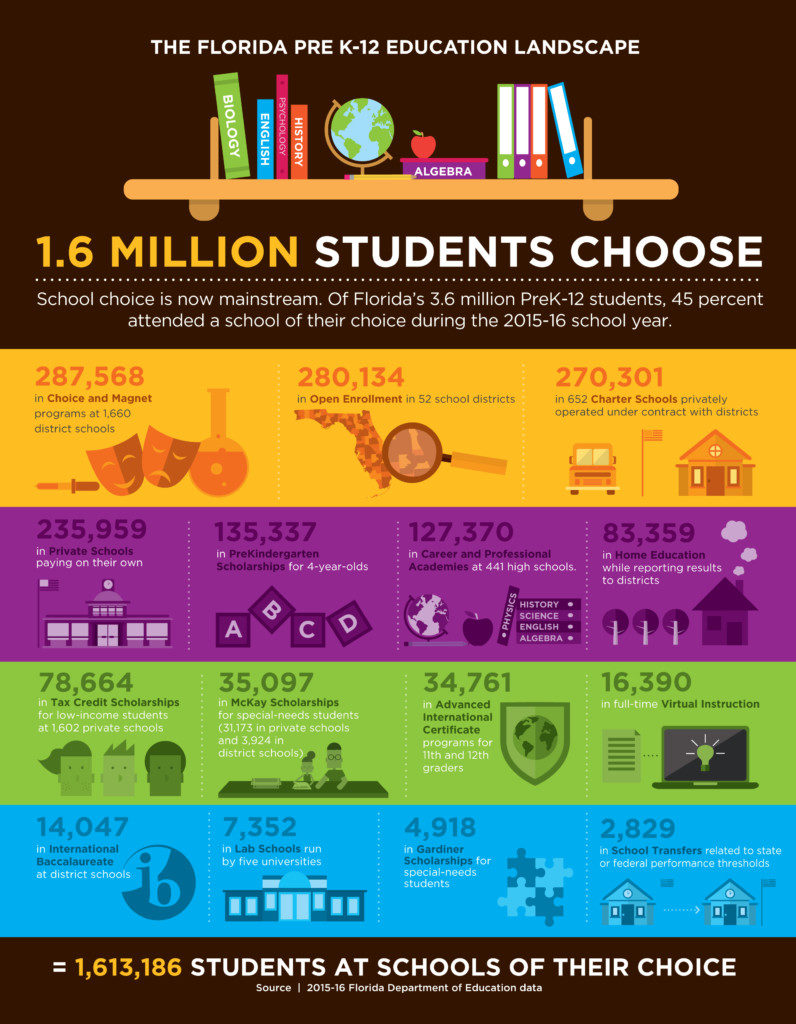
The changes in Florida’s educational landscape show no signs of slowing.
On the contrary, more than 1.6 million preK-12 students enrolled in school choice programs during the 2015-16 school year. School choice enrollment increased by more than 74,000 – nearly the same amount as the previous two years combined, according to an analysis of Florida Department of Education data.
Although 45 percent of all preK-12 students in Florida choose schools outside their neighborhood zones, the two most widely used forms of choice are offered by public school districts.
Enrollment in choice and magnet programs increased dramatically, taking the top spot from open enrollment. Charter schools grew by 19,000 students and are vying with magnets to become the most popular public-school option.
Career and professional academies in public schools appeared to shrink last school year. Fewer parents taught their children at home, though the 0.9 percent drop in homeschooling was driven almost entirely by Miami-Dade County.
Participation in two public-school options for children in struggling schools also declined. No Child Left Behind transfers (24 percent) and Opportunity Scholarships (58 percent) shrank, in part because the state suspended school accountability consequences.
Proportionally, the Gardiner Scholarship program for children with certain special needs saw the largest gains, increasing by 143 percent last year. (Step Up For Students, which publishes this blog and pays my salary, helps administer the Gardiner scholarship program.) Full-time virtual instruction came in a close second, increasing 132 percent.
The continued growth of public and private choice options suggests high demand for parental choice. Indeed, choice has become so deeply entwined with public education that, for many parents, even neighborhood schools are a choice, since they choose them from among multiple other options.
Now in its seventh year, the Changing Landscape document collects enrollment data from the Florida Department of Education highlighting a menu of educational options available to students throughout the state. The document is a joint project of the department and Step Up For Students.A PDF of the document can also be downloaded here.